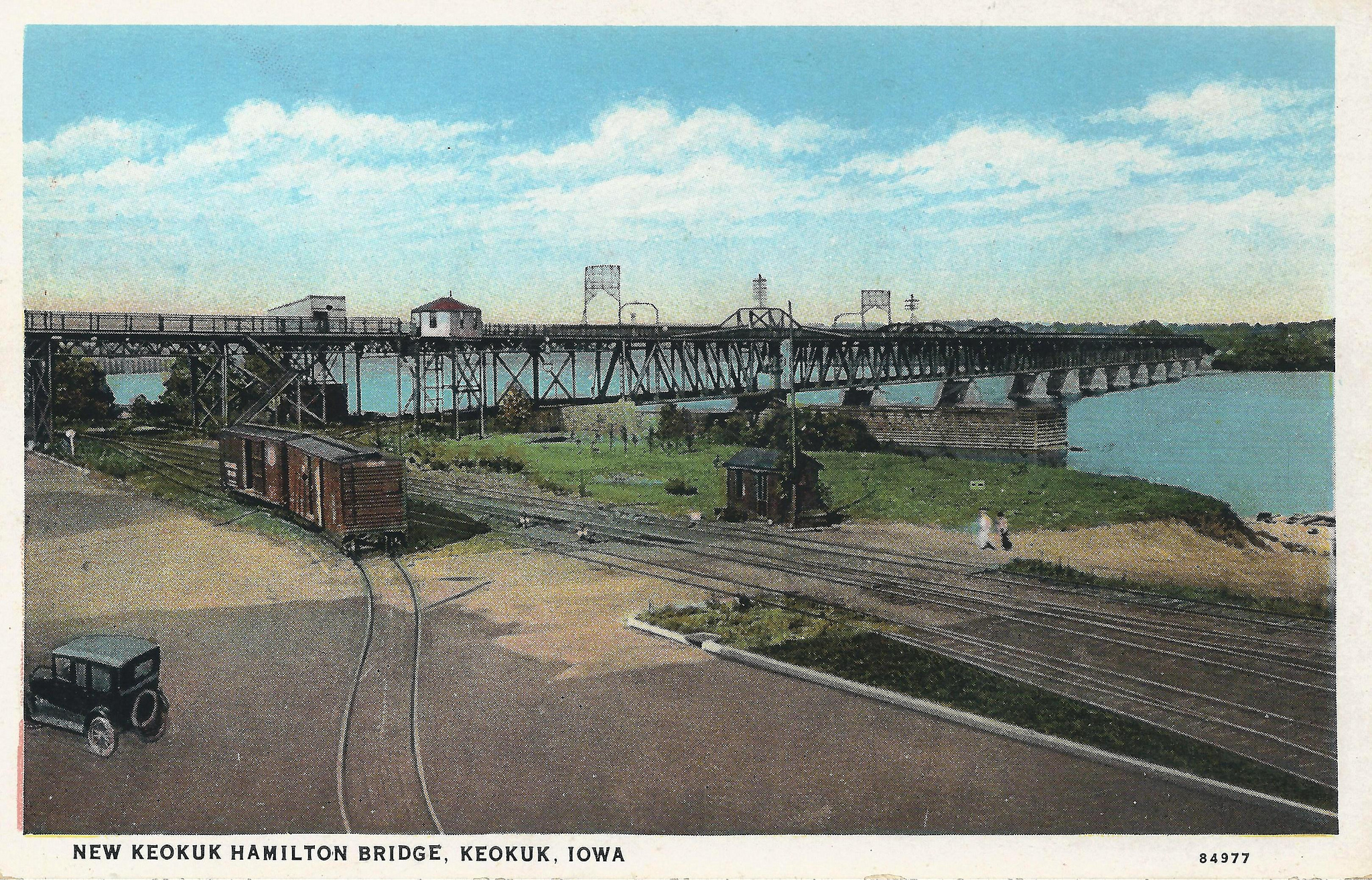The P&O began to be leased by the Chicago, Burlington & Quincy before construction ever began.
The first section of line was built in 1857 between Peoria and Chenoa. At the same time, the Logansport, Peoria and Burlington Railroad began building west from the Indiana Border to Gilman.
The line from Peoria to the IL/IN Border was completed by 1859.
The railroad entered foreclosure in 1864. being renamed as the Toledo, Peoria & Warsaw Railroad.
The railroad began to plan a western expansion heading west.
This expansion opened in 1868, connecting to Warsaw on the Mississippi River. A bridge was built to Keokuk, Iowa across the Mississippi River.
The railroad became the Toledo, Peoria & Western Railroad in 1887.
The railroad continued to operate independently, until 1960 when the Atchison, Topeka & Santa Fe Railroad and Pennsylvania Railroad each purchased a half controlling interest in the railroad.
By 1983, the railroad became fully engulfed in ATSF control.
In 1989, the railroad was sold to new investors, who revived the TP&W name.
However, 1986 the railroad sold the western portion between Keokuk and LaHarpe to the Keokuk Junction Railway.
In 2011, the remaining line west of Peoria was sold to the KJRY, while the TP&W continues to operate east of Peoria into Indiana.
01/14/22
View an article regarding the construction of this bridge.
The Keokuk-Hamilton Bridge, also commonly known as the Keokuk Rail Bridge is a massive through truss style bridge across the Mississippi River, serving a single rail line of traffic; and formerly US-136.
The present bridge was completed in 1917 to replace an older Whipple Truss Bridge originally built in 1869, which had outlived its useful service life.
To pressure the Keokuk & Hamilton Bridge Company and the railroad to replace the structure, a group of wealthy businessmen from the region decided to draw up plans to build a competing structure near the site of the existing bridge.
This forced the company to move forward with replacement plans.
In 1917, the Keokuk & Hamilton Bridge Company, along with the Toledo, Peoria & Western Railroad and the Wabash Railroad; which both used the structure began construction on a newer, heavier bridge.
This new bridge utilized a large 380 Foot Swing Span, along with Parker Through Trusses and Pratt Through Trusses. A single railroad line went through the structure, while a dual lane traffic deck was added to the top.
The railroad approached the structure on an earthen fill on the Illinois side, and with a stone parapet on the Iowa side. The road however utilized a large girder viaduct to reach the bridge.

Blueprints of the bridge, from Railway Age Gazette Volume 58
The trusses were of simple construction. The main swing span had two leafs, each with 6 panels (as along the railroad). These Pratt Through Truss spans were brought together over a round pier which contained a large gear mechanism. Riveted connections were contained in the spans.
Continuing east, a pair of 9-panel, Parker Through Trusses with pinned connections crossed axillary channels.
An additional 8 spans of 9-Panel, Pratt Through Trusses with riveted connections can be seen on the eastern end of the bridge.
The entirety of the bridge rests on stone substructures, although some have been encased in concrete.
The road deck of the bridge once carried US-136, a major road between Central Nebraska and Indianapolis. This road contained a toll booth, until 1949 when the Keokuk & Hamilton Bridge Company turned the structure over to the City of Keokuk.
The result was the intentions of a free bridge, although this lasted only three years. Tolls would be reimposed in 1952, primarily to finance maintenance to the structure.
In 1985, a new bridge opened just downstream of the historic truss bridge. US-136 was shifted to this structure and the road deck on the bridge abandoned. On the Iowa side, one can walk as far as the swing span on the road deck, which has been converted to Pedestrian Usage. On the Illinois Side, the former road deck remains closed.

Historic photo of the bridge
Keokuk Junction currently operates this bridge with minimal traffic. The author hopes this bridge will continue to be preserved for future generations. One idea the author has proposed is creating a continuous walkway across the bridge, and opening up the beach area on the Illinois Side as a well designed park.
In addition, the author has ranked this bridge as being regionally significant, due to it being one of the few large scale crossings of the Upper Mississippi River which is viewable to the public eye up close, as well as the great historic nature of the structure.
The photo above is an overview from a park in Keokuk. The author has included blueprints and historic photos from the Historic American Engineering Record (HAER) below.
The photo below is a portal detail. The photo far below is the complete coversheet for the blue prints of the structure.
| Upstream | Fort Madison Rail Bridge |
| Downstream (Main Channel) | Quincy Rail Bridge |
| Downstream (East Channel) | BNSF Quincy Bay Bridge |
These Pictures Start at varying points in the Series

